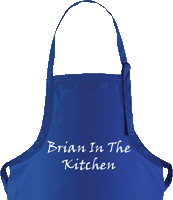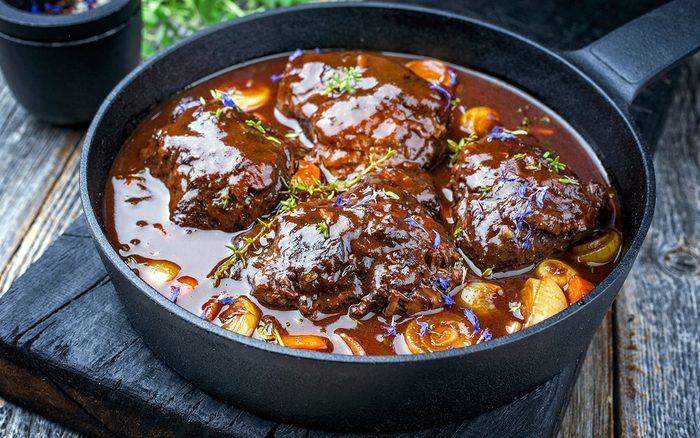Brian in the Kitchen Recipes


BRIAN IN THE KITCHEN brought to you by Stittsworth Meats
April 27 2022
Cooking Techniques - Braising

Image From foodnetwork.com
All cooking is transformational, but few techniques do more to alter the flavor and texture of meat, poultry, and seafood than braising. As cooking methods go, braising may be the most forgiving. Pot roast always got a bad rap on family sitcoms, but if you’re all about a one-pot wonder, braising is one very good way to get it done.
Braising is a combination-cooking method that starts with pan searing followed by slow cooking in a liquid—usually in a Dutch oven or a slow cooker—until ingredients become tender. A successful braise transforms both the ingredient being cooked and the cooking liquid itself into something harmonious.
Braise when your goal is deep levels of flavor and soft, melty caramelized texture. Braising works beautifully on all cuts of meat, even lighter ones like chicken, but the cooking technique especially benefits the tough cuts, like beef brisket. Braising tenderizes meat, dissolving collagen and connective tissue into gelatin (which makes for a richer sauce or gravy later on) and coaxing flavor through every meat fiber until it’s fork-tender.
What’s the Difference Between Slow Braising and Fast Braising?
Cook time for braising will always depend on the protein in question, but for tougher cuts of meat, two to three hours at a simmer is optimal to allow the collagen to soften completely.
But! Braising doesn’t have to be an all-day affair: depending on the protein or vegetable, quick braises can be pulled off in a pressure cooker like an Instant Pot that does the work in, well, an instant. The resulting texture might not be an exact facsimile, but you can make up the difference by reducing the remaining liquid and incorporating it into the final presentation.